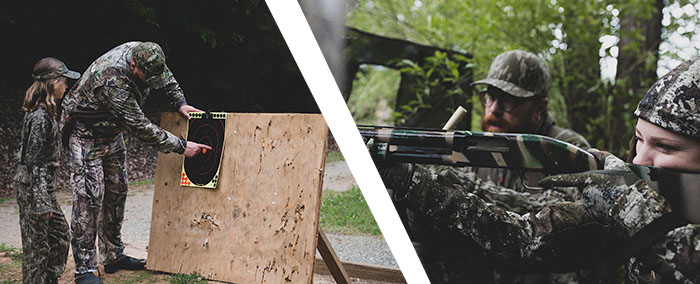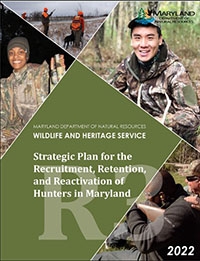Recruitment, Retention and Reactivation (R3) of Hunters in Maryland
Main_Content

What is R3
“RECRUITMENT, RETENTION AND REACTIVATION, “R3” is a nationwide movement focusing on strategically increasing and diversifying participation in and support for shooting sports, hunting, and angling. On the hunting and shooting sports side, this movement started as a result of a noticeable decline in hunting and shooting sports participation starting in the 1980s. The decline in those activities, which sustain a multi-billion-dollar industry and provide the primary financial support for state-level wildlife conservation in the United States, posed a threat to wildlife conservation. In addition to hunting and shooting sports importance to conservation, these activities have also been integral to the American way of life and our culture as it has developed in our society having numerous benefits to those that participate.” (Council to Advance Hunting and the Shooting Sports)
Click here for a short video explaining R3
Why is R3 Important?
- Culturally
- Throughout time hunting has been and continues to provide a powerful connection to the outdoors and natural environment for millions of people across the United States and globally.
- The
North American Model of Wildlife Conservation highlights the historic role of hunting in conservation and wildlife management. The seven tenets of the model highlight hunting as a sustainable right and a way to manage and conserve species for everyone’s enjoyment.
- Ecologically
- Historically, hunting has been used as a relatively low-cost wildlife management tool and can be effective to control overabundant wildlife populations as well as nuisance and invasive species.
- Regulated hunting is a useful technique to control wildlife populations within their carrying capacity and at socially acceptable levels.
- Economically
- Declining hunting participation negatively impacts state and federal agencies’ ability to achieve wildlife management objectives and generate revenue for conservation.
- Hunters have a tremendous impact on the U.S. economy, spending over $90 billion each year to engage in their pursuits. This spending helps create and support more than 680,000 jobs and generates $5.4 billion in state and local taxes. If you add in federal taxes paid by hunters, the number doubles to $11.8 billion. More importantly, hunters generate a critical amount of conservation dollars through the American System of Conservation Funding by purchasing hunting licenses, tags, and permits, and by paying excise taxes on a wide array of sporting equipment, including firearms, ammunition, archery equipment, and other hunting-related expenditures. In total, monies paid by sportsmen and women provide 80% of the funding for most state fish and wildlife agencies, which are the primary managers of our nation’s fish and wildlife resources.”
Congressional Sportsman’s Foundation

Strategic Plan for the Recruitment, Retention, and Reactivation of Hunters in Maryland